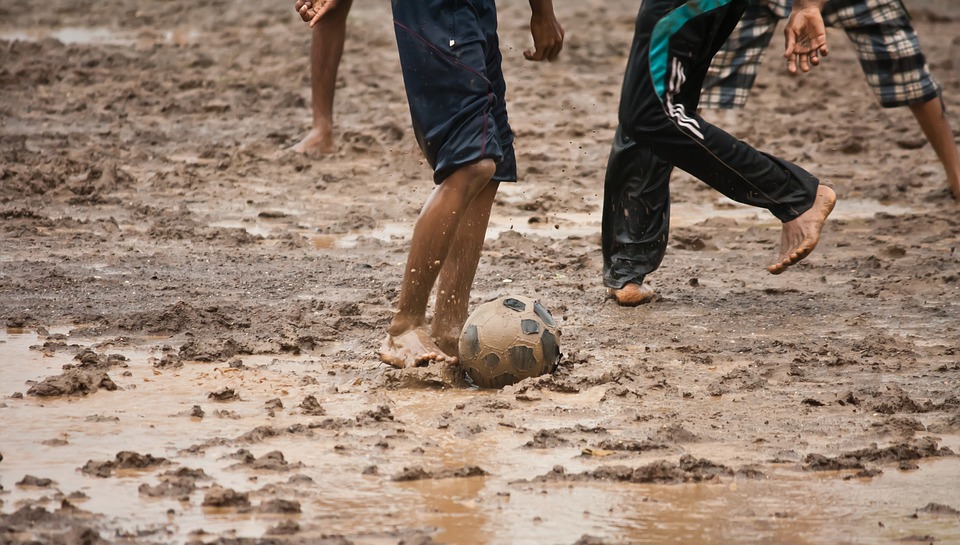
Mud is a difficult thing to avoid when you live in rainy Puget Sound. And while parents may view it as a messy nuisance, kids typically relish squelching around in mud. And it turns out, kids are right: Mud is not only one of the most equitable play materials out there — easily accessible to children around the world — but also, as it turns out, is good for kids' health and learning.
In honor of mud's positive attributes, International Mud Day was established in 2011 by World Forum Foundation to encourage global community through nature. Celebrated on June 29, it is a call to get muddy and celebrate nature and the great outdoors.
Why mud is good for your health
Playing in mud boosts the body’s immune system. According to the "hygiene hypothesis," children raised in extremely clean environments, who have little exposure to the bacteria, viruses and parasites found typically found in mud, are more likely to develop allergies and asthma. When children are exposed to germs and pathogens during infancy, their risk of developing cardiovascular inflammation and autoimmune diseases in adulthood is reduced.
Playing in mud (and other outdoor activities) also improves eyesight. Recent research has shown that 80–90 percent of children in Asia are nearsighted, which is thought to be due in large part to the amount of time they spend indoors. Longitudinal studies report that children who spend more time outdoors at age 8 are much less likely to become nearsighted by the age of 15.

Dirt and mud play is also good for mental health. A study from the United Kingdom found that friendly bacteria contained in soil activates neurons responsible for producing the brain chemical serotonin, the chemical that makes us happy. Good levels of vitamin D (obtained from sunlight) are also linked to mental wellbeing and general health. A 2004 study from the American Journal of Public Health reported that children’s stress levels fell within minutes of seeing green spaces.
Mud play is educational
The open-ended nature of mud play is perfect for the developing brain. Here are a few reasons why:
- During unstructured, outdoor play, children form ideas, problem solve and think critically. Mud is an abundant and cost-free material, so children can experiment repeatedly and create new hypotheses.
- While kids are squelching around, they are challenging themselves by expanding their experiences and becoming more adventurous.
- As one of the most basic elements of the earth, mud allows children to develop an appreciation for the environment as they experience its diversity.
- Mud is a perfect learning material. Mud enables children to practice emergent science by exploring its properties, solving problems and investigating the living things found within it. Math skills are encouraged through weighing and measuring and manipulating and navigating the way through mud enhances motor skills. As an open-ended, creative material, mud stimulates artistic expression, imagination, expressive language and critical thinking.
Favorite mud activities
Build a mud kitchen: A mud kitchen is an outside version of the much loved play kitchen from indoors but much more fun as you can make real sloppy concoctions without worrying about the mess. Mud kitchens do not have to be complicated or expensive. An old piece of furniture is a good base or you can create something from pallets, tires or crates. Provide old pans and cooking utensils and place it near a water source for added fun.
Make mud faces on trees: Stick wet mud to a tree trunk and decorate with a face shape using seeds, petals, leaves and sticks. When dry the faces will remain on the tree.
Dig trenches and pathways: Designate an area where children can dig with shovels to create trenches and pathways. Give them buckets of water to make a muddy river.
Small world play: Create a swamp for toy dinosaurs or a building site for toy cars and trucks.
Use mud for art: Painting with mud works well on all kinds of surfaces including paper, cardboard, plastic sheeting or even on the ground. Try other art activities; make muddy footprints, mould mud into sculptures or make patterns in mud with a stick and natural materials.
Of course the simplest way to experience mud is to find (or make) a muddy puddle, throw off your shoes and feel the mud ooze between your toes. Happy mudding!
More creative outdoor play ideas
10 ideas for playing outside in the dark
10 fun DIY backyard play ideas
Best adventure playgrounds around Seattle
Swings, snails and sun: Simple delights of backyard fun
Forward to nature: Why a walk in the woods could calm ADHD and reconnect your family




